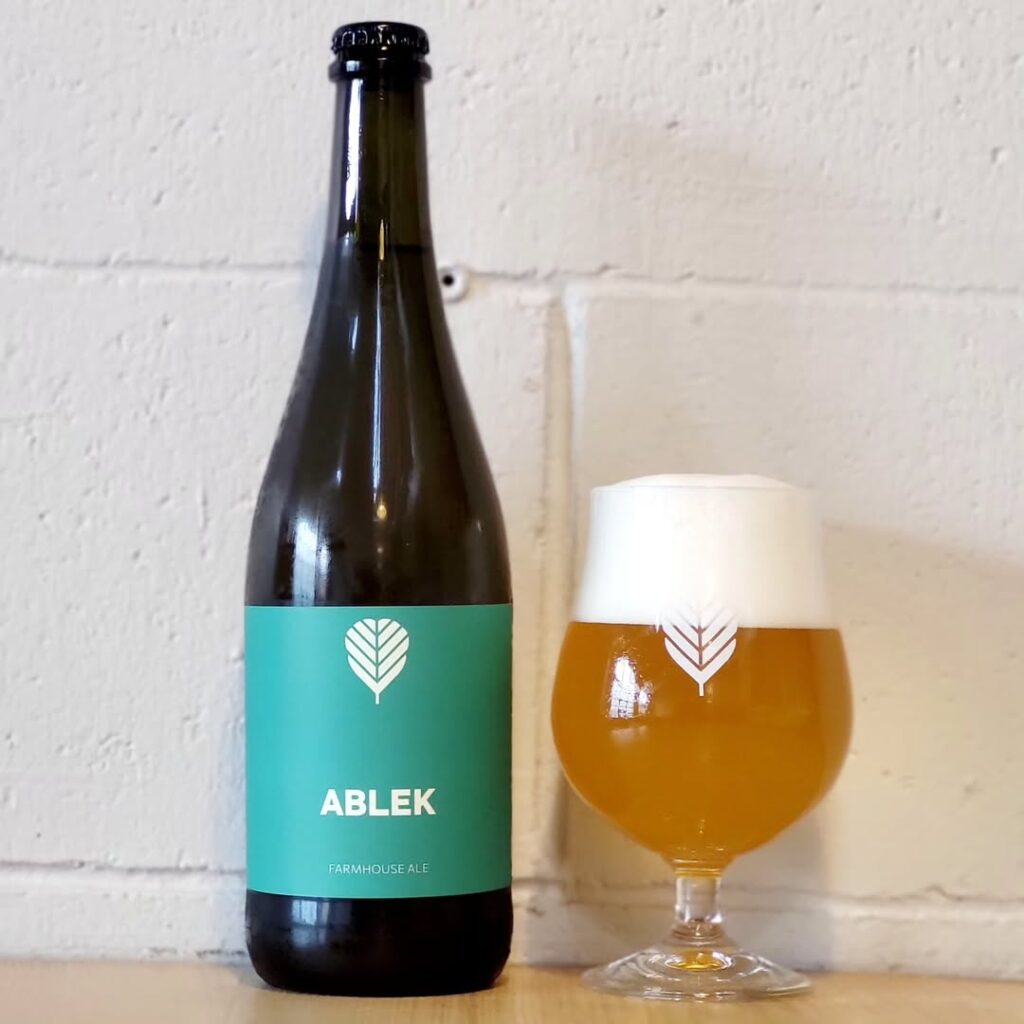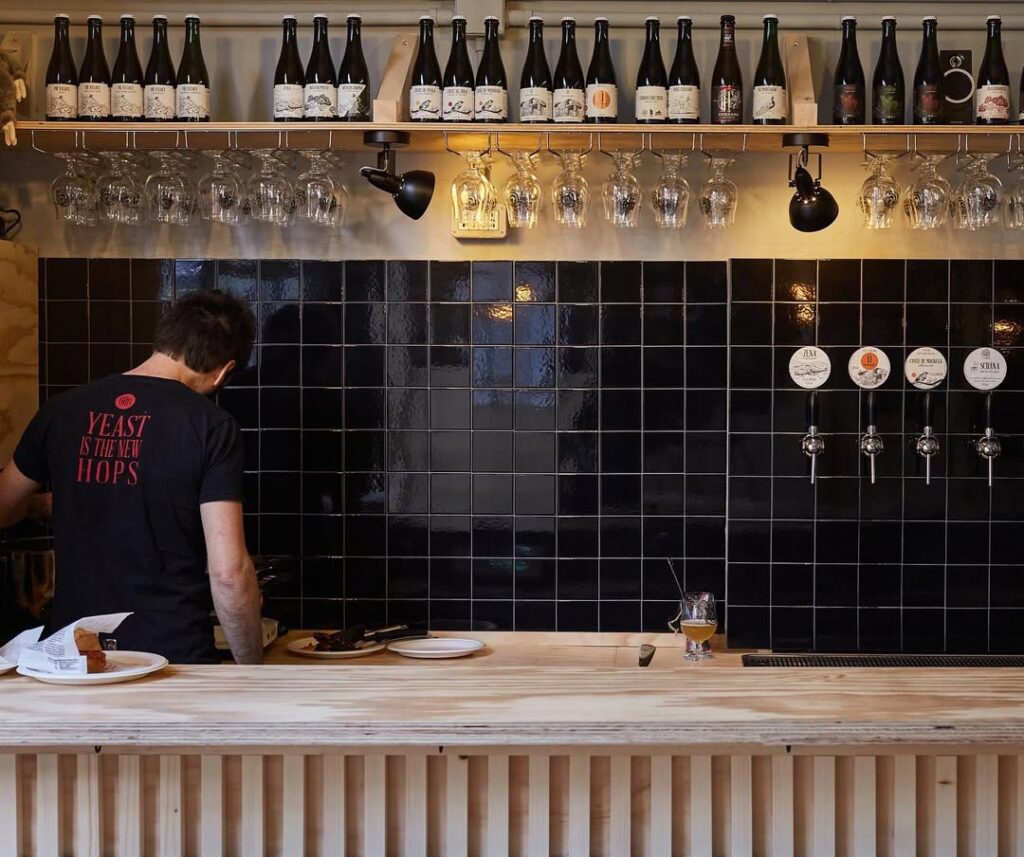x Le Mondial de la Bière June 20–22 in Montréal
In Italy’s forgotten corner, where Renaissance palaces meet Adriatic shores and Apennine peaks, craft brewers are writing a new chapter in the region’s proud tradition of making extraordinary things
Marche occupies a peculiar position in the Italian imagination—simultaneously central and peripheral, familiar yet mysterious. Wedged between the more celebrated regions that surround it, this stretch of rolling hills and medieval towns has long been Italy’s best-kept secret. Now, as craft brewers across the peninsula compete for attention, Marche’s artisans are quietly crafting beers that reflect the region’s unique position between mountain and sea, tradition and innovation.
The region’s craft beer movement embodies the Marchigiano character perfectly: understated yet sophisticated, rooted in tradition yet unafraid of experimentation. Here, where Raphael was born and Rossini composed his first operas, brewing has become another form of artistic expression—one that captures the essence of a landscape where Apennine springs meet Adriatic breezes.

The Geography of Flavor
Marche’s unique terroir—stretching from the Sibillini Mountains to the Adriatic coast—creates microclimates that produce ingredients with extraordinary character. The region’s craft brewers have learned to exploit these geographic advantages, creating beers that taste unmistakably of their place of origin.
In the Sibillini foothills near Camerino, Birrificio Monte Nerone has perfected the art of high-altitude brewing. Master brewer Alessandro Fedeli sources water from springs that emerge from limestone caves at 1,200 meters above sea level, creating beers with a mineral complexity that reflects the region’s geological diversity. His “Vetta” series of mountain ales captures different aspects of the alpine environment—wild herbs gathered at treeline, chestnuts from ancient groves, and honey from apiaries that migrate seasonally between valley and peak.
Contrast this with the coastal approach taken by Birrificio Adriatico in Fano. Here, brewers incorporate sea salt harvested from traditional saltworks that have operated since Roman times, creating beers that carry subtle maritime notes. Their “Tramontana” gose, brewed with Adriatic sea salt and local saba (grape must), represents a uniquely Marchigiano interpretation of this ancient German style.
Renaissance Cities, Modern Brewing
Urbino, the Renaissance jewel that gave the world Raphael and one of Europe’s most beautiful ducal palaces, has embraced craft beer with characteristic intellectual sophistication. The city’s brewery scene centers around the university quarter, where establishments like Birroteca del Duca have created spaces that feel more like Renaissance salons than modern bars.
The local craft beer culture reflects Urbino’s academic heritage, with serious discussions about brewing techniques and flavor profiles conducted in the shadow of Piero della Francesca frescoes. At Malto e Luppolo, located in a palazzo that once housed Cardinal Albani’s collection, owner and beer sommelier Marco Urbinati offers guided tastings that pair local brews with Renaissance art history—literally drinking beer while contemplating masterpieces.
This intellectual approach to craft beer extends throughout the region’s historic centers. In Ascoli Piceno, famous for its travertine piazzas and stuffed olives, the craft beer scene has developed around the concept of historical brewing. Several local breweries have researched medieval and Renaissance brewing techniques, creating beers that attempt to recreate the flavors that might have graced the tables of Renaissance princes.
Agricultural Innovation
Marche’s agricultural heritage runs deep—this is the region that perfected the cultivation of Verdicchio grapes and created the world’s finest olive ascolane. The same agricultural expertise that produces these delicacies now serves the region’s craft brewing movement, with many breweries operating as part of integrated farming operations.
In the Verdicchio heartland around Jesi, the Sartarelli family—renowned winemakers for five generations—have added brewing to their portfolio. Their “Classico” range of beers incorporates spent Verdicchio pomace, creating ales with subtle wine-like characteristics that blur the boundaries between beer and wine. The result is a uniquely Marchigiano product that couldn’t exist anywhere else.
Similarly, in the hills around Macerata, Birrificio delle Marche has developed relationships with local farmers that allow them to source heritage grain varieties that were common in the region centuries ago. Their “Grano del Nonno” series uses ancient wheat varieties that were nearly extinct, creating beers with flavor profiles that connect directly to the region’s agricultural past.

The Adriatic Influence
The sea shapes everything in Marche, from climate to cuisine to cultural outlook. This maritime influence has profoundly affected the region’s approach to craft brewing, creating a style that’s lighter and more food-friendly than the robust ales produced in Italy’s mountain regions.
In Ancona, the region’s cosmopolitan port capital, Birrificio Marittimo has developed a philosophy they call “brewing for the table”—creating beers specifically designed to complement the region’s fish-heavy cuisine. Their “Brodetto” wheat beer, brewed with herbs used in the region’s famous fish stew, provides the perfect accompaniment to Adriatic seafood. The beer’s light body and herbal complexity enhance rather than overwhelm delicate fish flavors.
This maritime influence extends to the region’s approach to distribution and marketing. Marchigiano brewers have developed strong relationships with restaurants along the Adriatic coast, creating seasonal beers that pair with the rhythms of fishing and tourism. Summer releases feature light, refreshing styles perfect for beach consumption, while winter offerings incorporate preserved fish and maritime herbs.
Artisanal Traditions
Marche has always been a region of artisans—from the violin makers of Cremona’s satellites to the shoemakers who supply Italy’s luxury fashion houses. This artisanal culture has profoundly influenced the region’s approach to craft brewing, emphasizing handwork, attention to detail, and the pursuit of perfection over profit.
At Birrificio Artigiano in Tolentino, the entire brewing process follows artisanal principles that wouldn’t be out of place in a medieval workshop. Every batch is hand-stirred, every bottle is individually inspected, and each beer is allowed to develop at its own pace rather than being rushed to market. The result is a product that embodies the Marchigiano commitment to quality craftsmanship.
This artisanal approach extends to packaging and presentation. Many Marchigiano breweries collaborate with local artists and designers, creating labels that reflect the region’s artistic heritage. Bottles become canvases for contemporary interpretations of Renaissance themes, while tap handles incorporate materials like Carrara marble and hand-blown Murano glass.

Hidden Treasures
Perhaps what makes Marche’s craft beer scene most compelling is its status as a hidden treasure—a sophisticated brewing culture that exists largely below the radar of international beer enthusiasts. This relative obscurity has allowed local brewers to develop their craft without the pressure of tourist expectations or commercial demands.
In small towns throughout the region, brewpubs operate as neighborhood gathering places, serving locally made beers to customers who understand and appreciate the subtle differences between batches. These intimate settings foster a kind of beer culture that’s increasingly rare—one based on community, conversation, and genuine appreciation for the brewer’s art.
Looking Forward
As Marche’s craft beer scene continues to evolve, it faces the delicate challenge of growth without losing its essential character. The region’s brewers are acutely aware that their greatest strength—the intimate, artisanal approach to brewing—could be threatened by commercial success.
Yet the signs suggest that Marchigiano brewing culture possesses the same resilience that has allowed the region to preserve its character through centuries of change. New breweries continue to emphasize local ingredients, traditional techniques, and community connection over rapid expansion or export ambitions.
The future of Marche’s craft beer movement seems likely to follow the region’s broader cultural pattern: steady, thoughtful development that honors the past while embracing innovation. In a world increasingly dominated by global brands and homogenized experiences, Marche offers something increasingly precious—authenticity, craftsmanship, and the kind of genuine local character that can’t be manufactured or replicated.
Between the peaks of the Sibillini and the beaches of the Adriatic, Marche’s craft brewers are proving that the most rewarding discoveries often come from the most unexpected places. In a region that has always excelled at creating beautiful things quietly, craft beer represents another chapter in an ongoing story of artisanal excellence—one that’s written not in marble or paint, but in the complex alchemy of malt, hops, and time.
x Le Mondial de la Bière June 20–22 in Montréal
